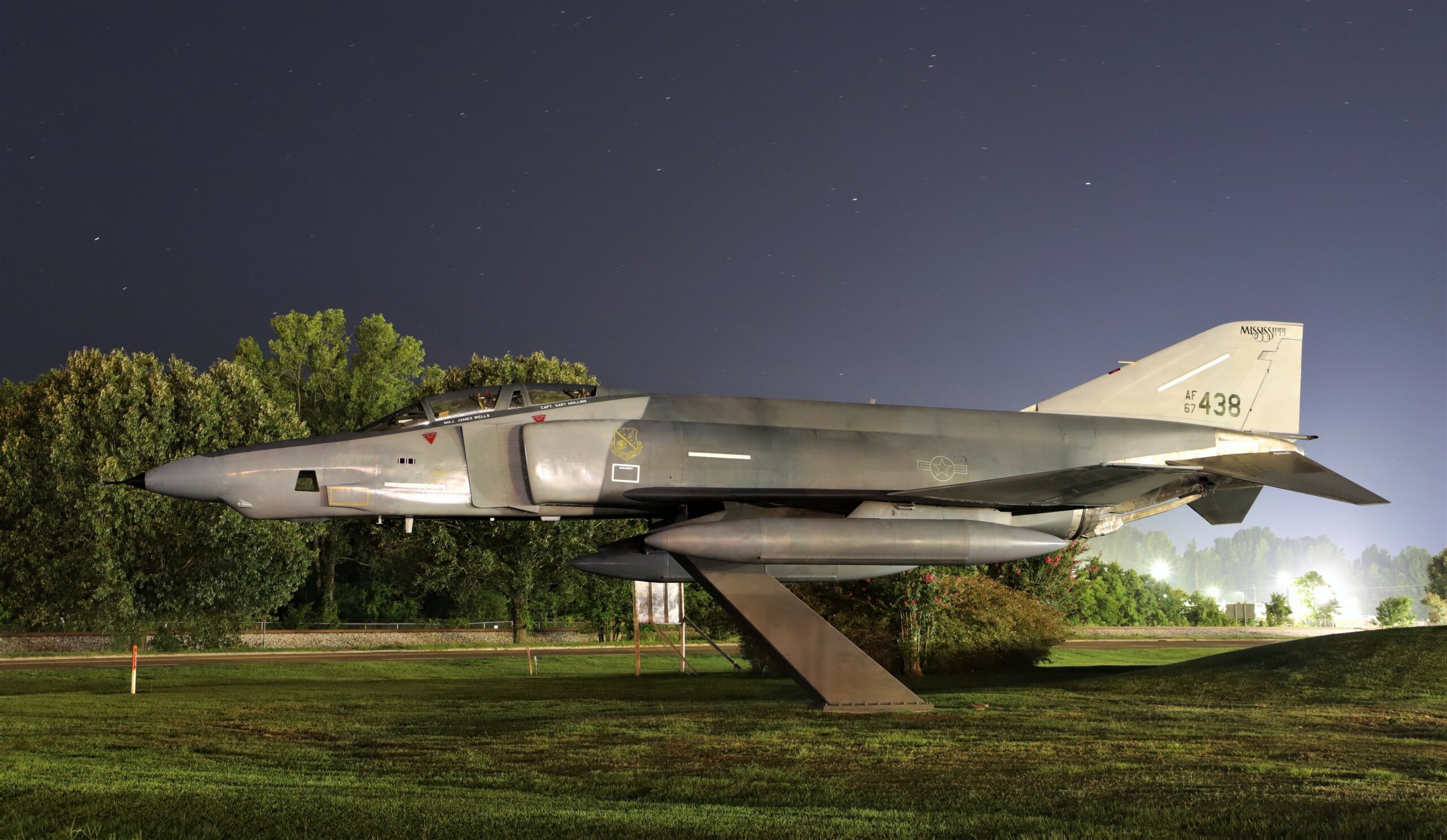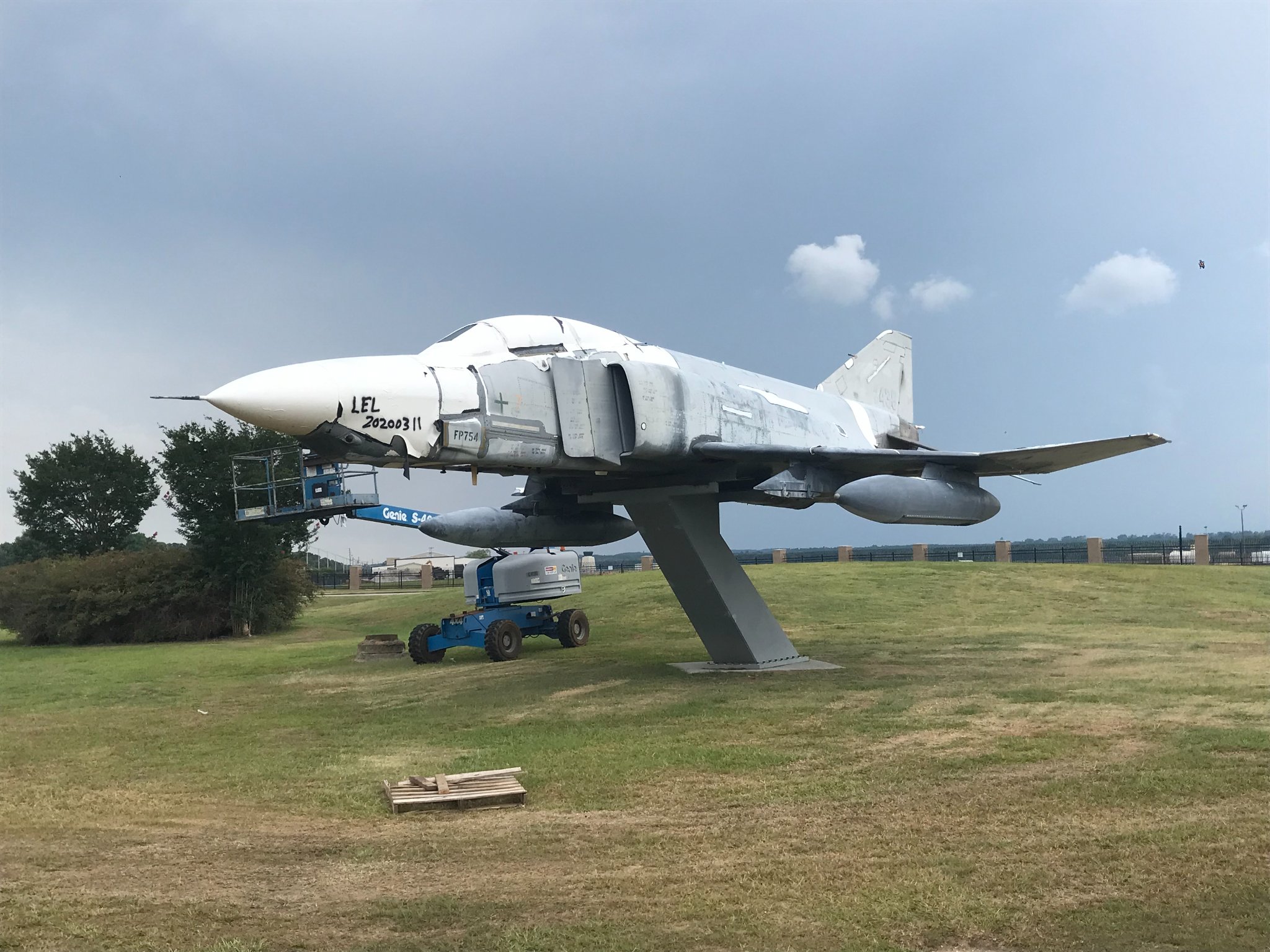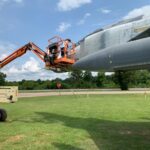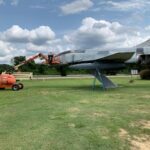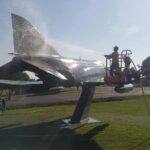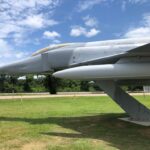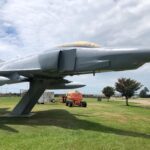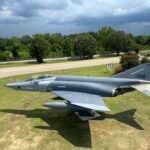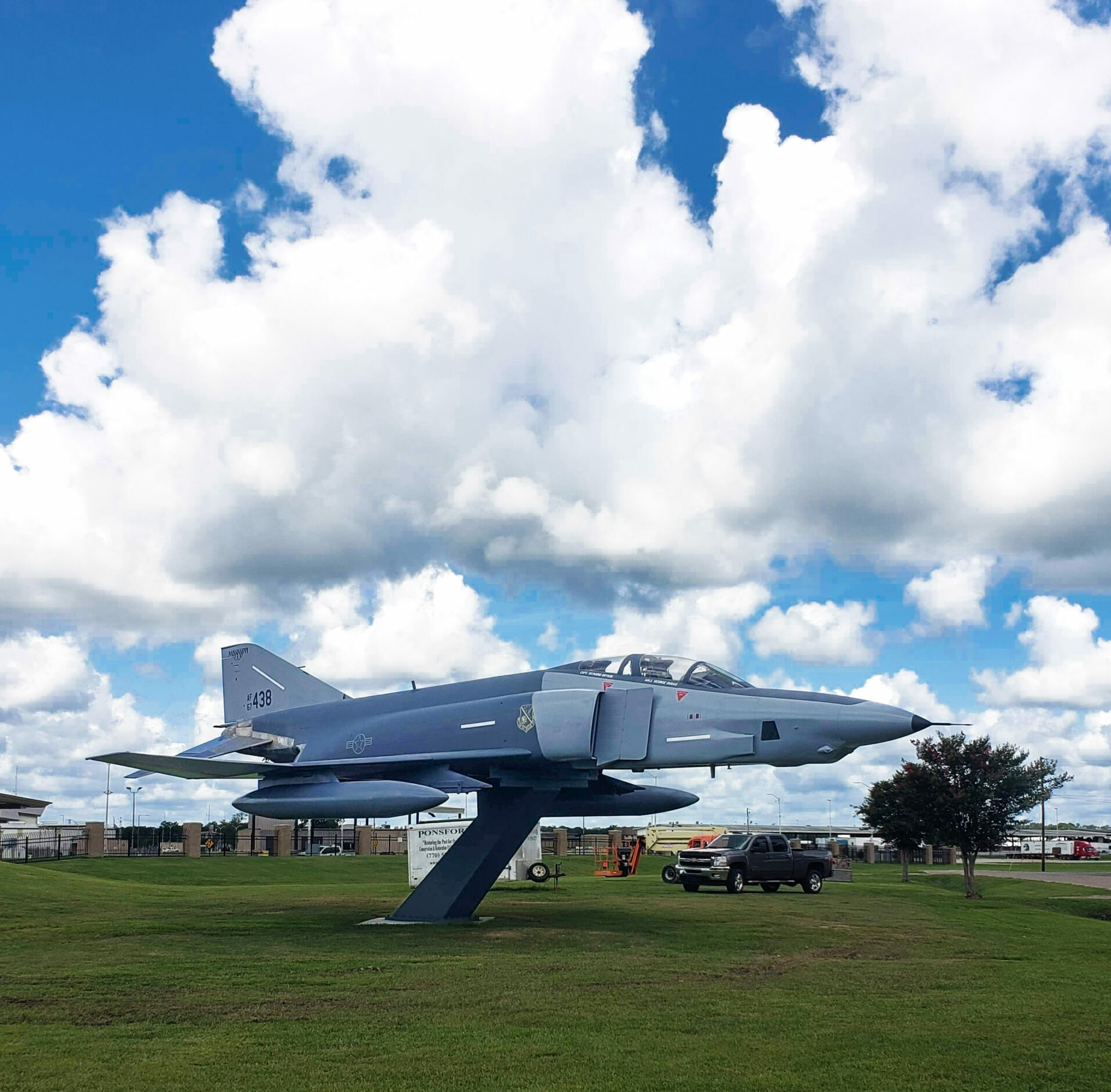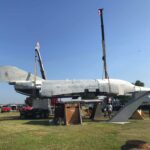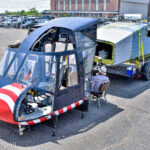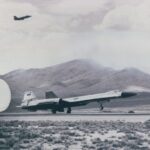Back in late June, we posted a small article HERE about the East Mississippi Veterans Foundation and their effort to create a memorial park to Mississippi’s military veterans in a plot of land adjacent to historic Key Field, which hosts an Air National Guard facility in Meridian, Mississippi. A major element for this new memorial park had just arrived on site at time of last writing, this being McDonnell Douglas RF-4C Phantom II 67-0438. The aircraft, following decades of desert storage at Davis-Monthan Air Force Base in Tucson, Arizona, had made the long journey to Meridian on the back of a low-loader. A team off-loaded the weather-beaten jet and mounted it atop a pylon, where it was due to receive some significant TLC for formal display in late August.
As it happened, the company slated to cosmetically restore the Phantom, Ponsford Ltd of Acworth, Georgia, was able to get to work on the historic jet far sooner than originally anticipated. After completing the refurbishment of another pole-mounted Phantom (F-4E 66-0456 in Rome, New York), the Ponsford team were in Meridian to begin work on the RF-4C by July 13th.
The refurbishing team first sanded the airframe gently, to give the new coat of paint a solid purchase on the airframe. They then removed the “spraylat” preservative coating from the aircraft’s more delicate sections, a legacy of the jet’s storage period in the Arizona boneyard. After this, the Phantom needed a good hose-down to remove the remaining dust and grime. Then the real work could begin; a layer of primer paint followed by the application of camouflage, and finally the finishing details such as the squadron markings and national insignia.
Ponsford completed their work on ‘438 by July 25th, presenting the aircraft in the same livery she wore while serving with the locally-based 186th Tactical Reconnaissance Group (now the 186th Air Refuelling Wing). She looks magnificent on her new perch. Rather poignantly, although in perfect keeping with the Memorial Park’s intent, the cockpit canopies are dedicated to two 186th TRG crews who lost their lives while flying RF-4Cs with the unit. The left side features the names of pilot Maj. James H. Wells, 36, of Meridian, Mississippi and his Weapons Systems Officer (WSO) Capt. Gary A. Mullins, 33, also of Meridian, who ejected, albeit fatally, from RF-4C 67-0439 during a training sortie near Pine Hill, Marion in western Alabama on March 26th, 1980. Meanwhile, the right side bears the names of pilot Maj. George K. Dugas, 38, of Germantown, Tennessee and his WSO, Capt. Raymond E. Bryson, 31, of Montgomery, Alabama who crashed in RF-4C 66-0413 on December 3rd, 1989 near the very same patch of Alabama swampland over which the earlier crew had died.
Getting the Phantom so beautifully finished was no mean feat, especially considering the short space of time over which it occurred. The East Mississippi Veterans Foundation has much to be proud of, and can now focus on completing the rest of the Memorial project, as they recently stated on their Facebook page: “From Boneyard to finished restoration in a little over 45 days, Meridian’s Jet stands in honor of all service members, veterans, and their families from Meridian and East Mississippi! A hearty “THANK YOU” to everyone for supporting this project. This project would not be were it is now without everyone’s generous contributions. Up next is “Build the Wall” – the Wall of Remembrance.”
Anyone wishing to help the East Mississippi Veterans Foundation with their endeavors should click HERE to find out how they can contribute.







